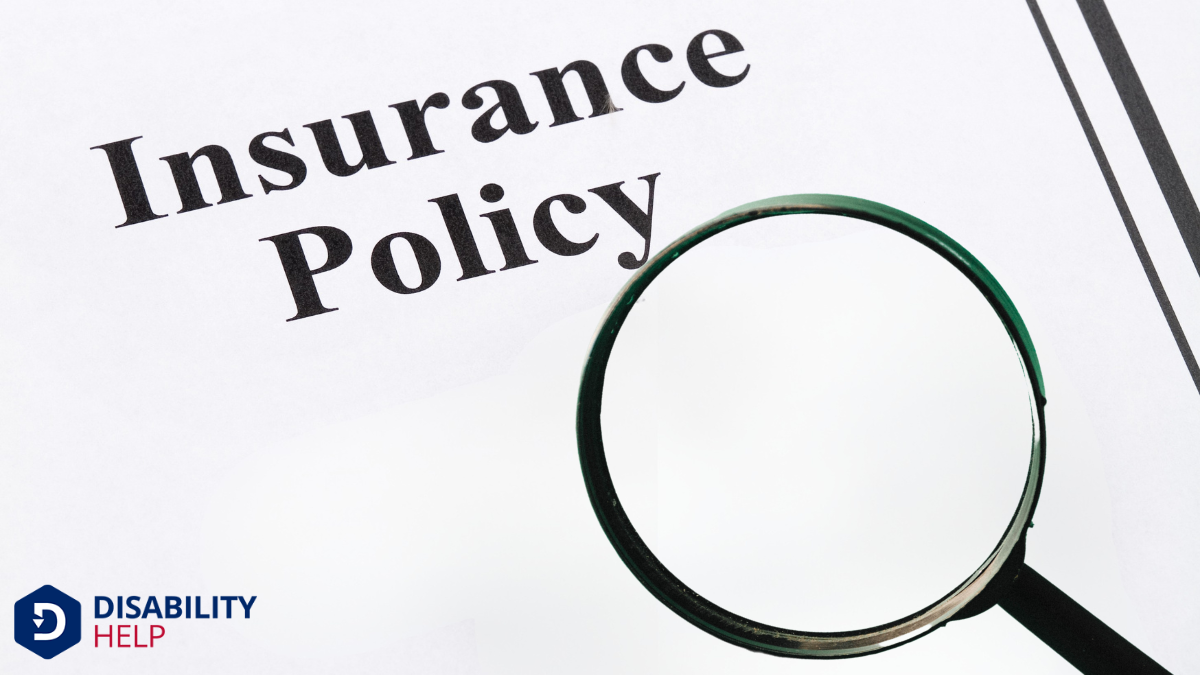When we're on the hunt for an insurance plan that includes non-emergency medical transportation, it can feel overwhelming. We need to start by researching providers and comparing their offerings. Understanding our specific needs and budget is essential, but deciphering the fine print of policy terms is equally important. Engaging with insurance representatives can also shed light on the claims process. Let's dive deeper into finding the best fit for our transportation needs.
Key Takeaways
- Research insurance providers offering extensive plans that include non-emergency medical transportation (NEMT) services.
- Compare multiple plans to evaluate the inclusionThe practice of creating environments in which any individual or group can be and feel welcomed, res... and details of NEMT coverage.
- Read customer reviews to assess the reliability and satisfaction of NEMT services.
- Confirm if plans include optional riders or add-ons specifically for NEMT services.
- Review policy terms for restrictions or limits on NEMT services and scheduling requirements.
Understanding Non-Emergency Medical Transportation Services
Non-emergency medical transportation (NEMT) services are crucial for ensuring access to healthcare, especially for individuals without reliable transportation.
We often take for granted the ease of getting to appointments, but for some, it's a significant hurdle. NEMT helps bridge this gap, offering rides to medical facilities for those who might otherwise miss important healthcare visits.
By providing these services, we can help reduce missed appointments, improve health outcomes, and lower overall healthcare costs.
Understanding NEMT means knowing it's more than just a ride. It's about ensuring everyone has the opportunity to receive timely care.
We see NEMT as a critical component of healthcare, making it accessible to all. As we explore insurance options, let's keep this crucial service in mind.
Researching Insurance Providers

When researching insurance providers, it's important we focus on those that prioritize extensive coverage, including non-emergency medical transportation services.
We can identify suitable providers by examining their policies and exploring their offerings. Here's how we can approach this:
- Read Reviews: Customer feedback provides insight into service reliability and satisfaction levels.
- Compare Plans: Evaluate multiple providers side-by-side to see which ones include non-emergency transport in their standard packages.
- Check Network: Confirm the provider partners with reputable transportation services in our area.
Identifying Your Coverage Needs
To find the right insurance plan, we need to think about our specific transportation needs, especially if regular medical appointments are required.
Let's also consider any existing medical conditions that might demand more frequent non-emergency travel.
Finally, evaluating our budget constraints will help us choose a plan that provides necessary coverage without breaking the bank.
Evaluate Transportation Requirements
Understanding our transportation needs is essential when selecting an insurance plan that includes non-emergency medical transportation.
We should consider how often we'll need transportation for medical appointments and the distance we'll travel. To evaluate our requirements effectively, let's focus on:
- Frequency: Do we've weekly therapy sessions or monthly doctor visits? Knowing how often we need transport can guide us toward a plan that meets our needs without excess.
- Distance: Are our medical providers nearby, or do we need to travel across town? This helps determine if we need a plan offering local or long-distance coverage.
- Special NeedsA term used to describe individuals who require additional support due to physical, learning, or emo...: Do we require wheelchair-accessible transport or additional assistance during travel? Identifying these needs guarantees we choose a plan that accommodates us comfortably.
Consider Medical Conditions
While evaluating our coverage needs, it's crucial to take into account any existing medical conditions that might require regular treatment or specialized care. These conditions often dictate how frequently we need to visit doctors or specialists, which in turn influences our need for non-emergency medical transportation.
For instance, if we've a chronic condition needing weekly therapy, confirming our insurance plan covers transportation can reduce stress and financial strain.
Let's think about any ongoing treatments or potential future medical scenarios we might face. Understanding these needs helps us select a plan that offers the right transportation services.
It's important to review the plan details to verify they align with our medical requirements, providing peace of mind and access to necessary care without any unexpected obstacles.
Assess Budget Constraints
After considering our medical conditions and transportation needs, we should now turn our attention to budget constraints.
Balancing cost and coverage is vital as we search for an insurance plan that fits. Let's keep these key points in mind:
- Monthly Premiums: Determine what we can comfortably pay each month. Lower premiums might mean higher out-of-pocket costs later.
- Deductibles and Co-Payments: Assess how much we're willing to pay before coverage kicks in and for each service. Higher deductibles can lower premiums but increase expenses when we use services.
- Coverage Limits: Check if there are caps on non-emergency medical transportation. We need to make certain that these limits align with our expected usage.
Comparing Insurance Plan Options
As we compare insurance plan options, let's focus on analyzing the coverage details to guarantee they meet our needs for non-emergency medical transportation.
We'll also want to evaluate the cost-benefit aspect, considering whether the premiums align with the benefits provided.
Coverage Details Analysis
When comparing insurance plans for non-emergency medical transportation, it's vital we explore the specifics of coverage details. A thorough analysis guarantees we make informed decisions.
Here's how we can approach it:
- Service Scope: Let's check what types of transportation services are included. Some plans might cover only specific types of vehicles or trips.
- Restrictions and Limitations: We should look for any limitations, such as distance caps or required advance notice for scheduling rides. These details can greatly impact our access to transportation.
- Provider Network: It's imperative to verify if there's a network of approved transportation providers. Using an out-of-network service might lead to extra costs or denied claims.
Cost-Benefit Evaluation
Evaluating the cost-benefit of insurance plans for non-emergency medical transportation involves balancing premiums and potential benefits.
We need to reflect on how much we'll pay monthly versus the savings we might gain from included transportation services. If a plan offers extensive transportation options but comes with a high premium, it's essential to assess if the service frequency and convenience justify the cost.
Let's also compare out-of-pocket expenses. Some plans might've lower premiums but higher co-pays for transportation services. Understanding these costs helps us avoid unexpected expenses.
Additionally, we should contemplate our typical transportation needs. If we frequently require these services, investing in a thorough plan might be worthwhile.
It's all about finding the right balance between cost and convenience.
Evaluating the Costs and Benefits

While exploring insurance options, it's crucial to weigh the costs and benefits of plans that include non-emergency medical transportation (NEMT).
We need to evaluate how NEMT coverage fits our needs and budget. Here's what we should examine:
- Premium Costs: Let's compare how much we'll pay monthly for plans with NEMT. Are we getting value for our money?
- Service Availability: We should verify NEMT services are accessible in our area. How extensive is the provider network?
- Usage Limits: It's significant to check if there are restrictions on the number of rides or types of appointments covered. Will it meet our usage requirements?
Consulting With Insurance Representatives
How can we make certain we're making the best choice when it comes to selecting an insurance plan with non-emergency medical transportation?
First, let's talk to insurance representatives directly. They can clarify details that might be confusing or unclear in policy documents.
We should prepare a list of specific questions about coverage, limitations, and costs related to non-emergency medical transportation. Asking about any recent changes in policy terms is also wise since insurance plans update frequently.
By discussing our needs openly, we can guarantee the plan aligns with our priorities. Representatives can also explain the claims process, which is essential for understanding how we'll access transportation services.
Let's approach these conversations ready to gather the information we need.
Checking for NEMT Specific Riders or Add-ons
When exploring insurance options, have we considered checking for specific riders or add-ons for non-emergency medical transportation (NEMT)?
Including these can enhance our policy's benefits, ensuring we've the coverage we need. By focusing on riders or add-ons, we can customize our insurance plan to align with our unique requirements.
Let's examine this:
- Identify Available Riders: Some insurers offer NEMT as an optional rider. We should inquire if our insurer provides this option.
- Assess Cost and Coverage: Adding a rider may impact our premium. We need to evaluate if the additional cost aligns with our budget and needs.
- Compare Options: Not all riders are equal. By comparing different insurers, we can find one that offers the best value and coverage for NEMT services.
Reviewing Policy Terms and Conditions

As we tailor our insurance plan with non-emergency medical transportation options, it's important we shift our focus to thoroughly reviewing the policy terms and conditions. Understanding the details guarantees we're making informed choices.
Let's pay close attention to coverage specifics, such as the scope of included services and any limitations that might apply. We should also look for information on the process of scheduling transportation and any associated costs or co-pays.
It's vital we identify any exclusions or restrictions that could affect our access to non-emergency medical transportation. Are there limits on the number of trips we can take, or certain destinations not covered?
Conclusion
In our quest to find the right insurance plan with non-emergency medical transportation, let's remember that thorough research and comparison are key. We should identify our specific needs, weigh costs and benefits, and engage openly with insurance representatives. By checking for NEMT-specific riders and reviewing policy terms carefully, we'll guarantee we're well-covered. Let's take these proactive steps to secure a plan that best supports our health and transportation needs.






